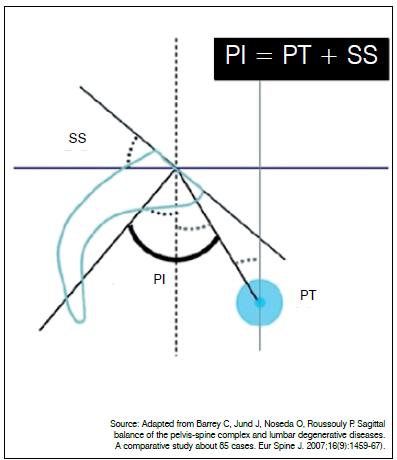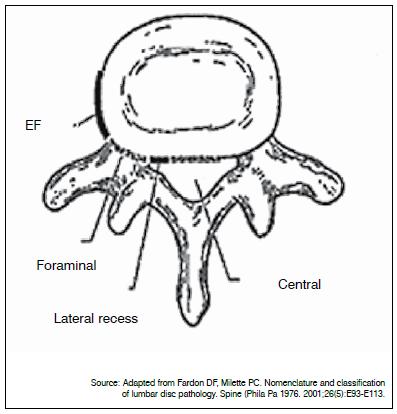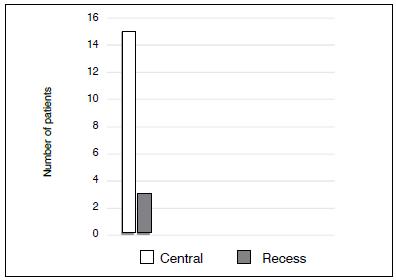Objective:
To associate spinopelvic parameters, pelvic incidence, sacral slope, pelvic tilt and lumbar lordosis with the axial location of lumbar disc herniation.
Methods:
Retrospective study, which evaluated imaging and medical records of 61 patients with lumbar disc herniation, who underwent surgery with decompression and instrumented lumbar fusion in only one level. Pelvic incidence, sacral slope, pelvic tilt and lumbar lordosis with simple lumbopelvic lateral radiographs, which included the lumbar spine, the sacrum and the proximal femur. The affected segment was identified as the level and location of lumbar disc herniation in the axial plane with MRI scans.
Results:
Of 61 patients, 29 (47.5%) had low lumbar lordosis; in this group 24 (82.8%) had central disc herniation, 4 (13.8%) had lateral recess disc herniation and 1 (3.4%) had extraforaminal disc herniation (p<0.05). Of the 61 patients, 18 (29.5%) had low sacral slope; of this group 15 (83.3%) had central disc herniation and 3 (16.7%) had disc herniation in lateral recess (p<0.05).
Conclusions:
There is a trend towards greater load distribution in the anterior region of the spine when the spine has hypolordotic curve. This study found an association between low lordosis and central disc herniation, as well as low sacral slope and central disc herniation.
Spinal diseases; Intervertebral disc displacement; Pelvis; Lordosis; Intervertebral disc degeneration








